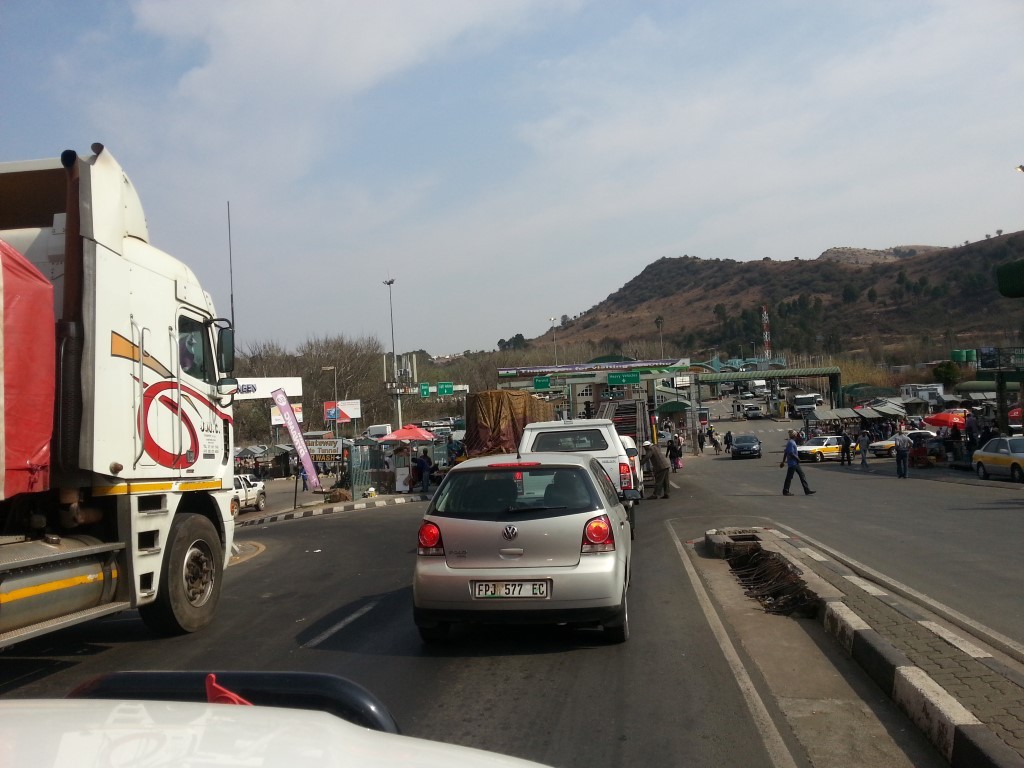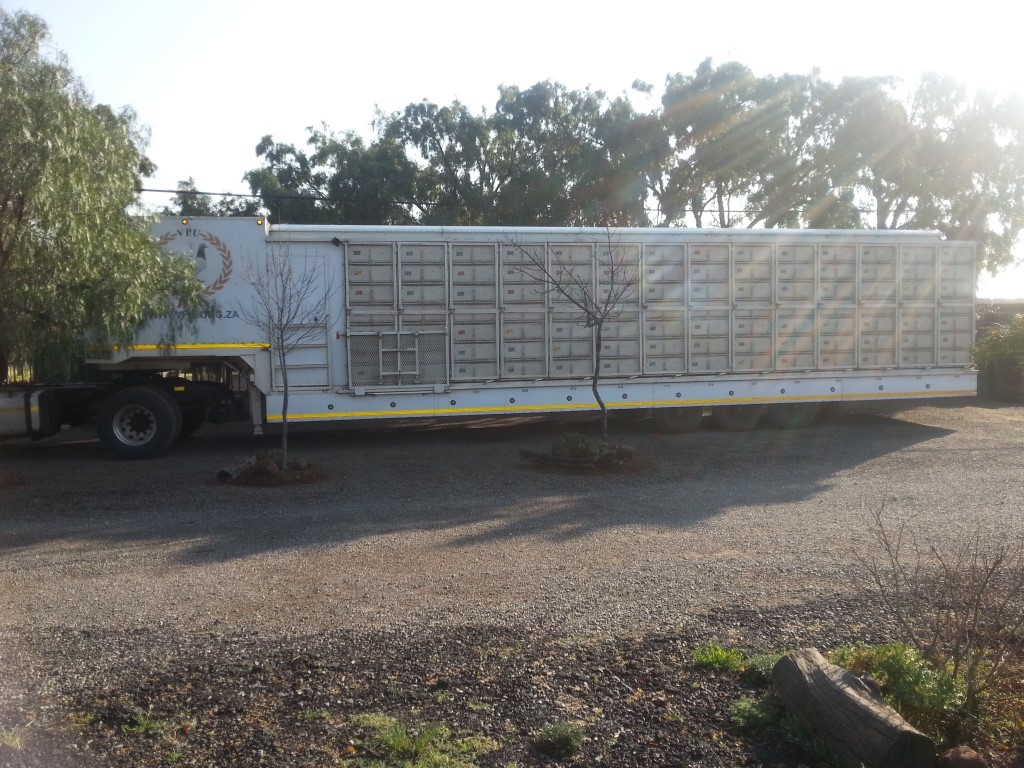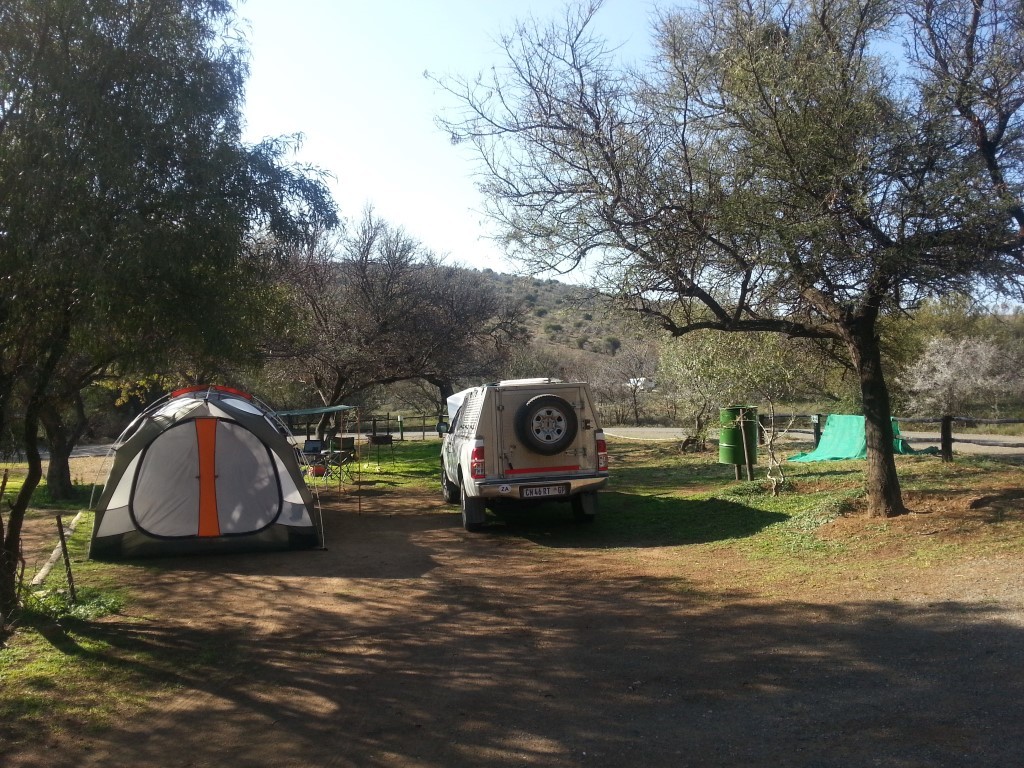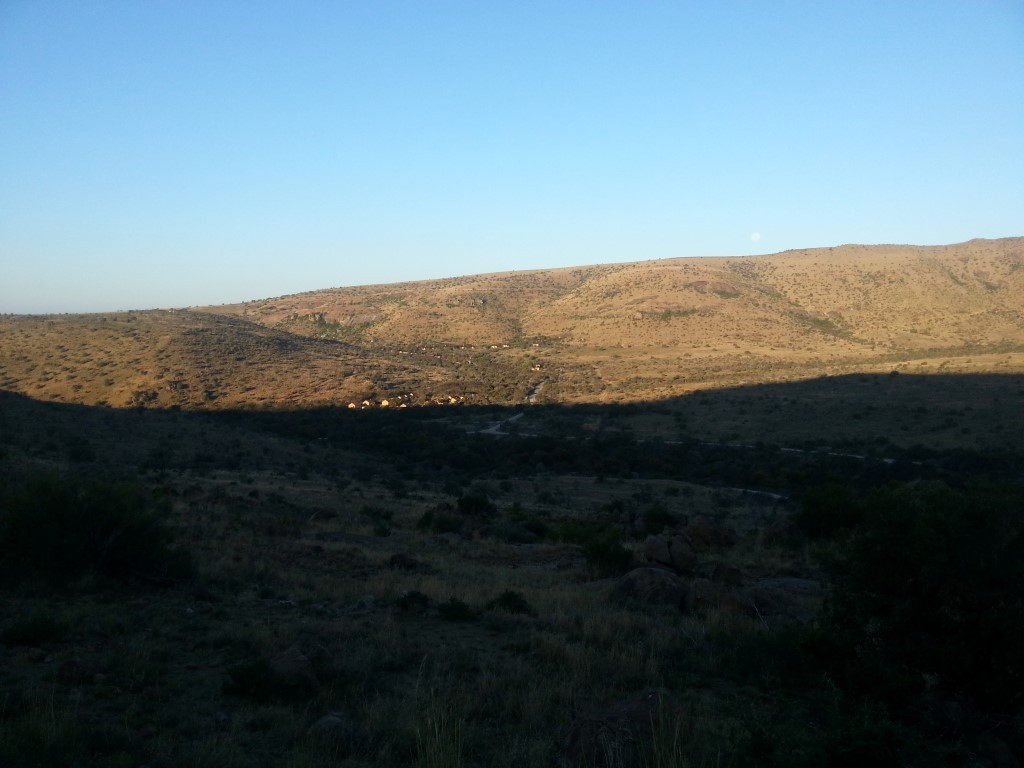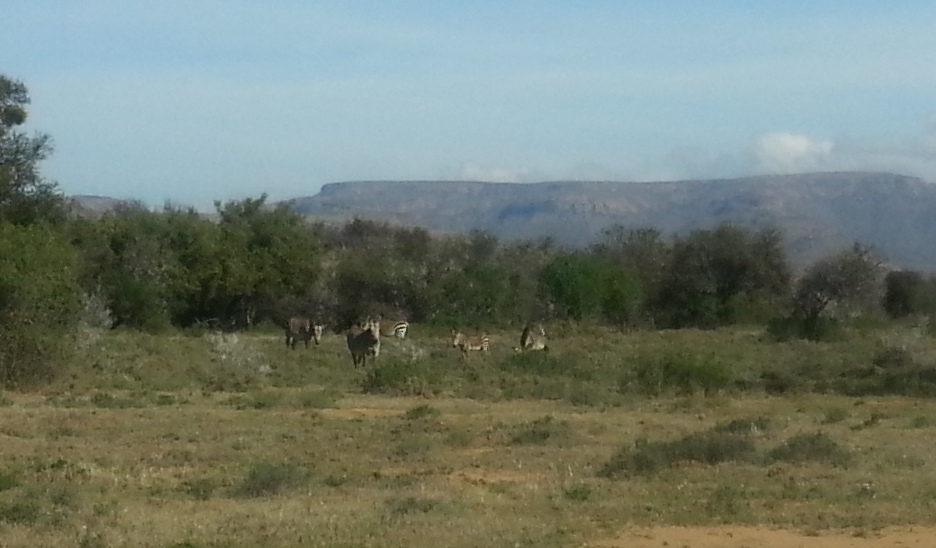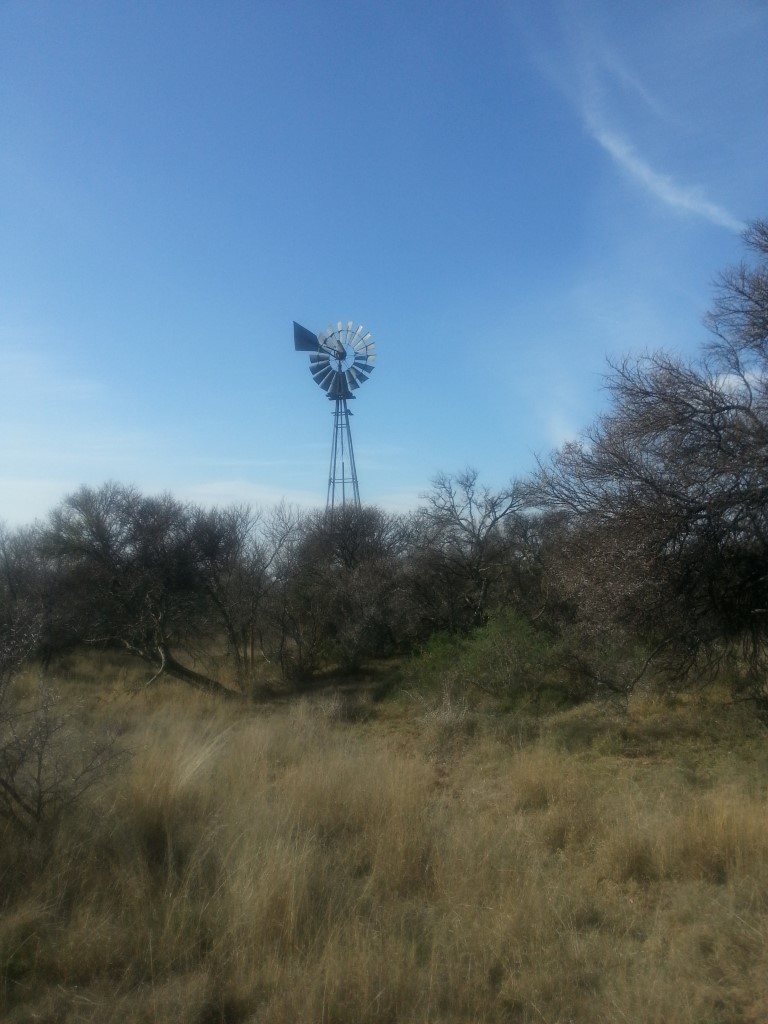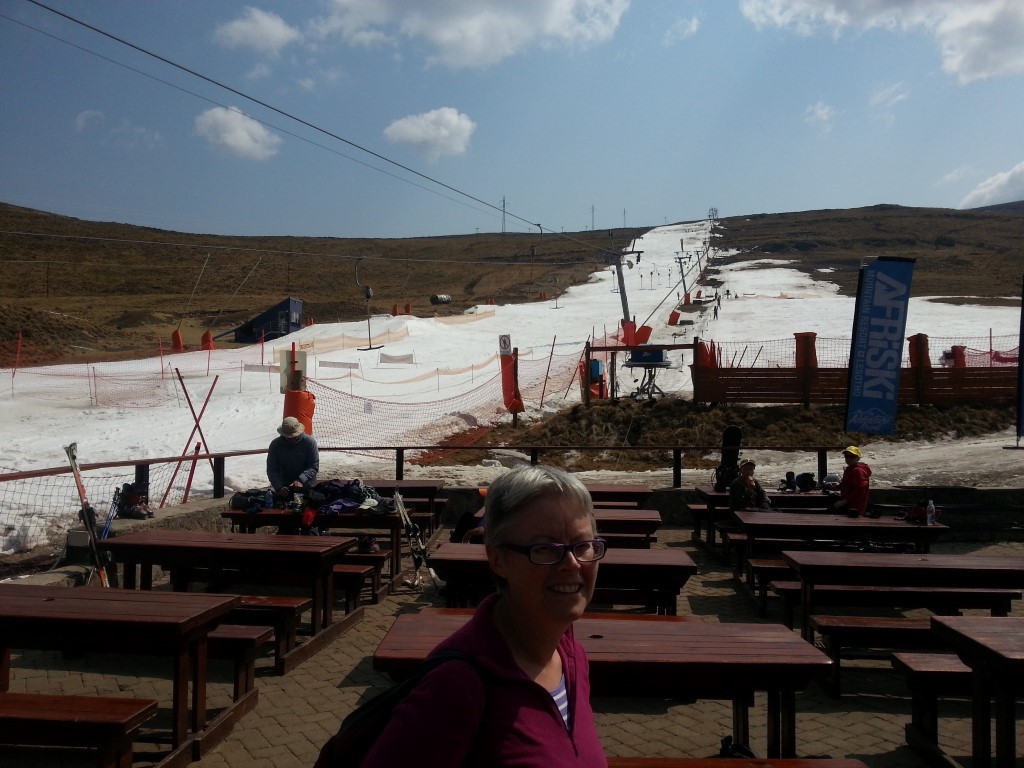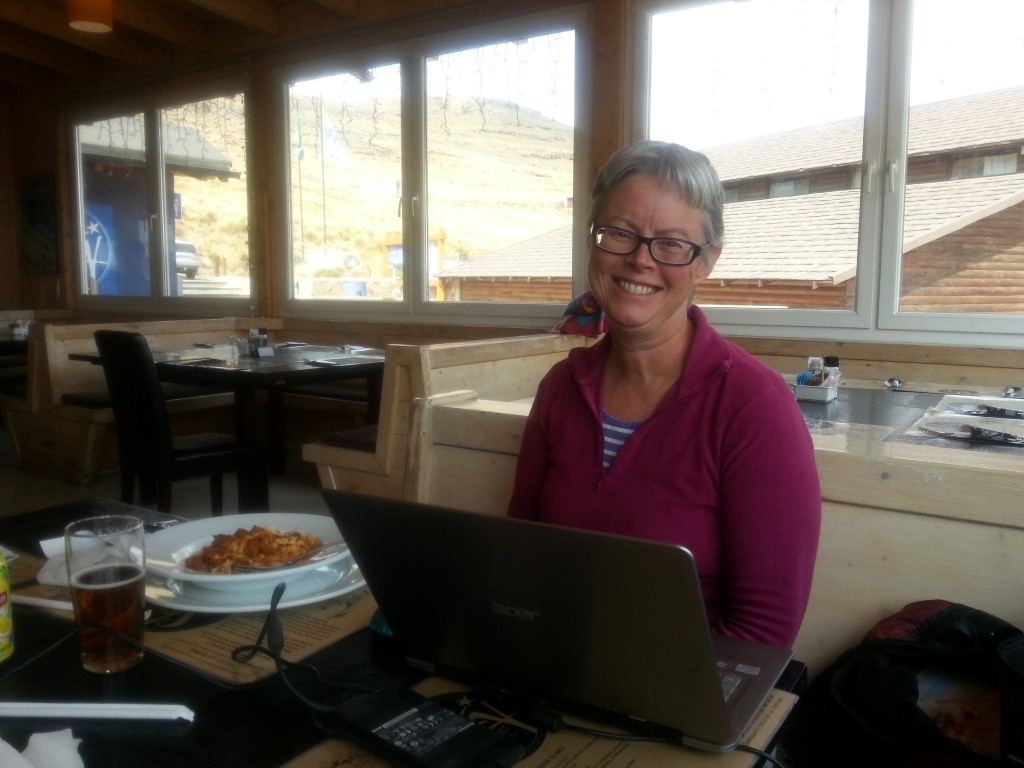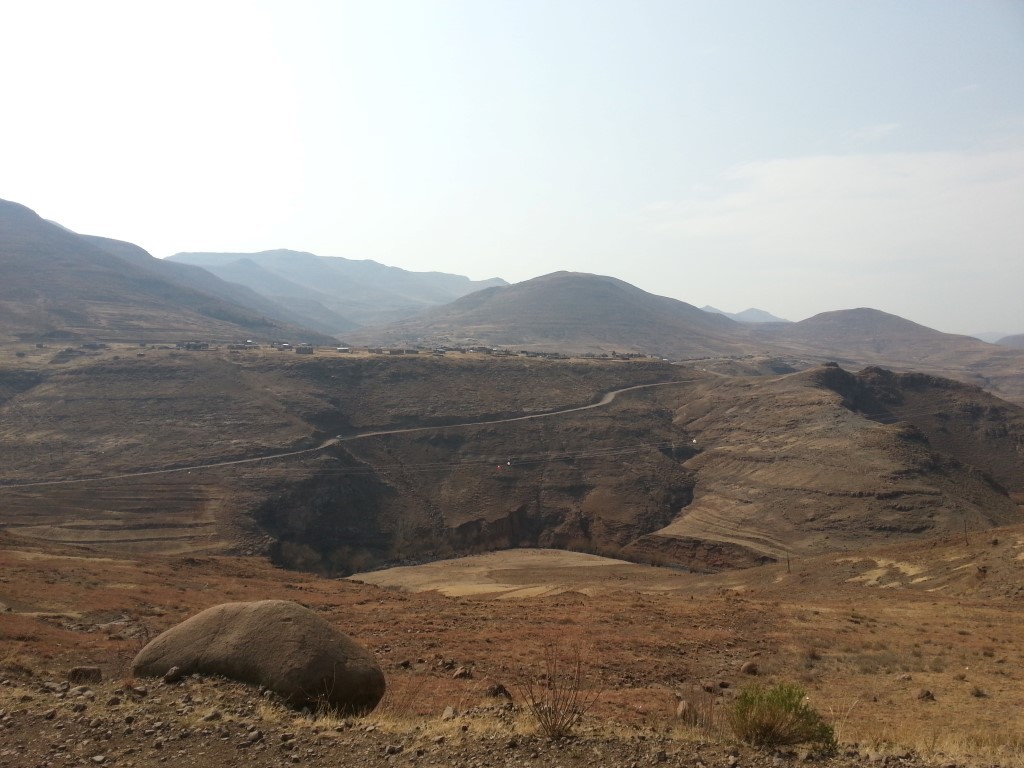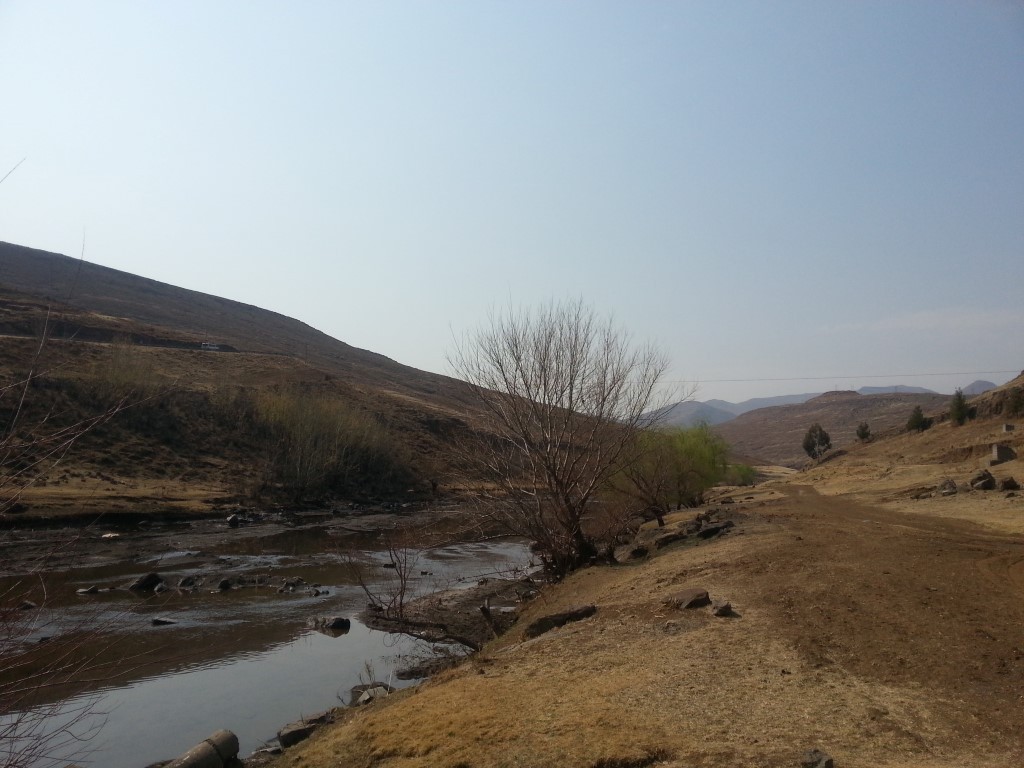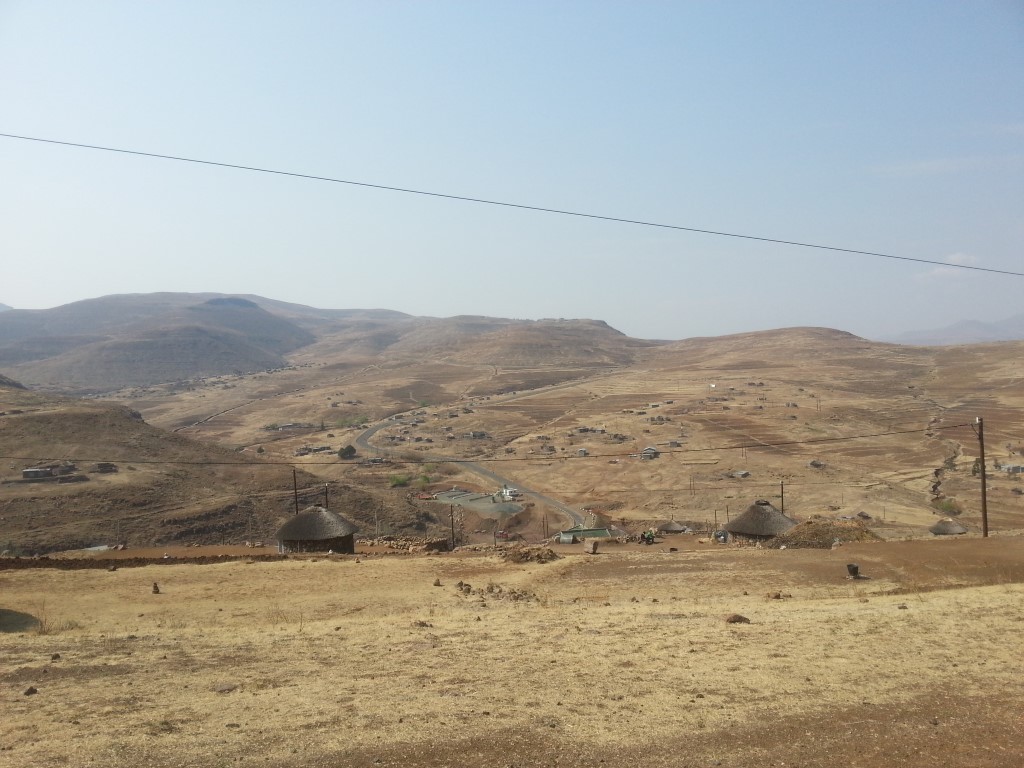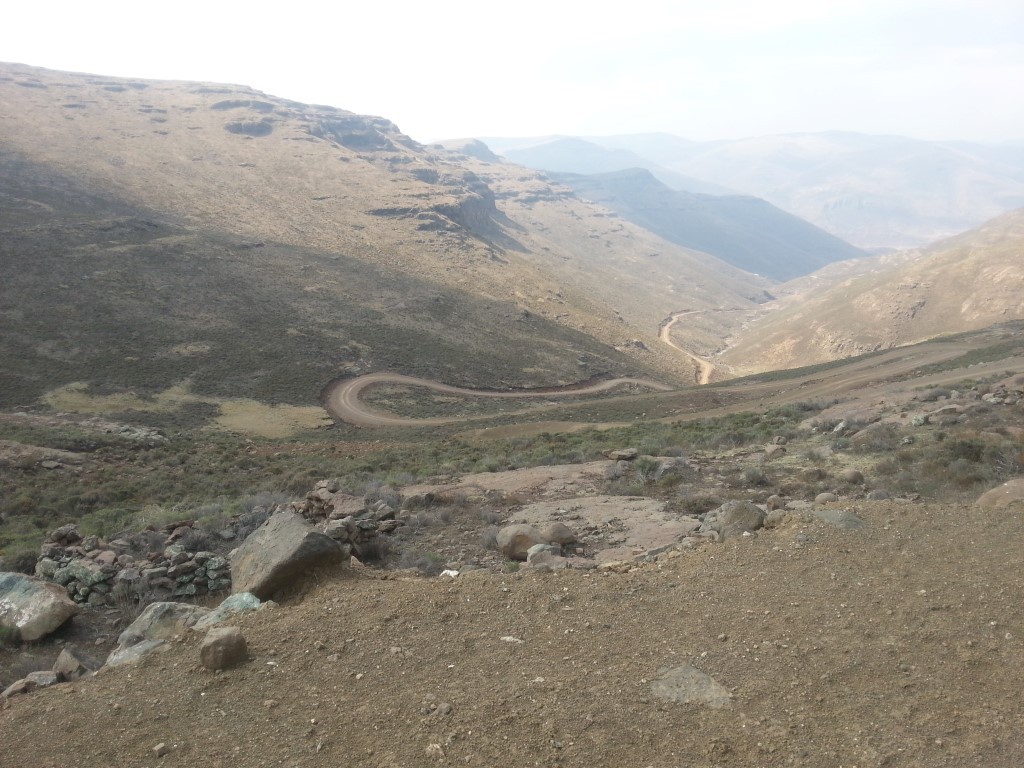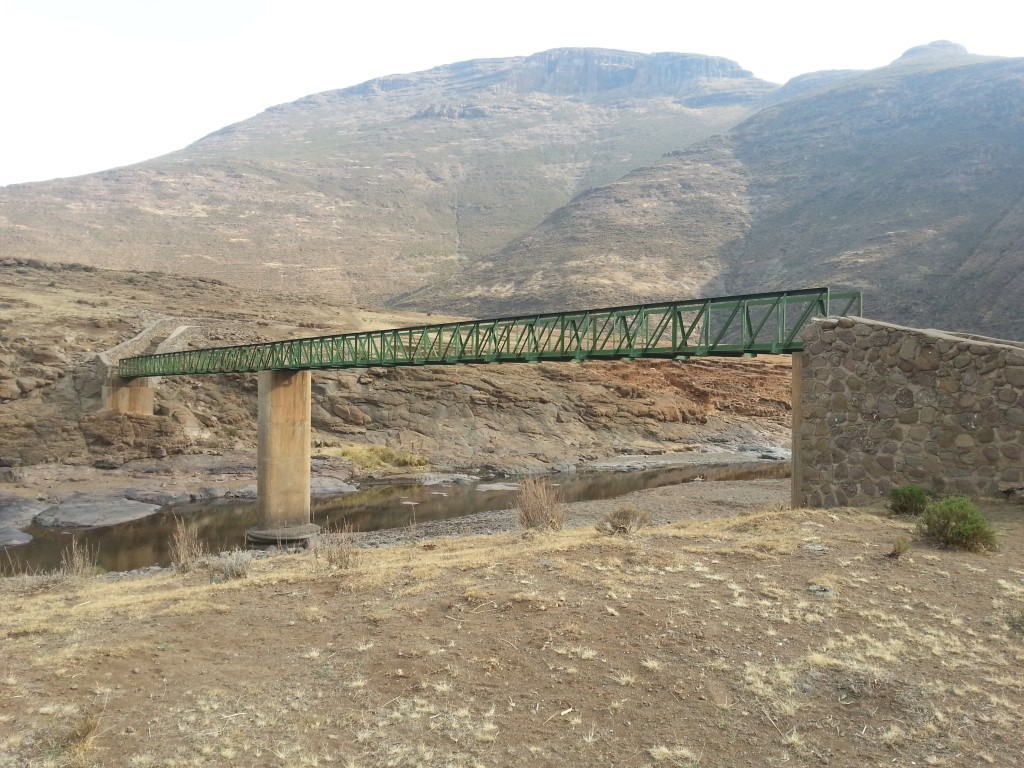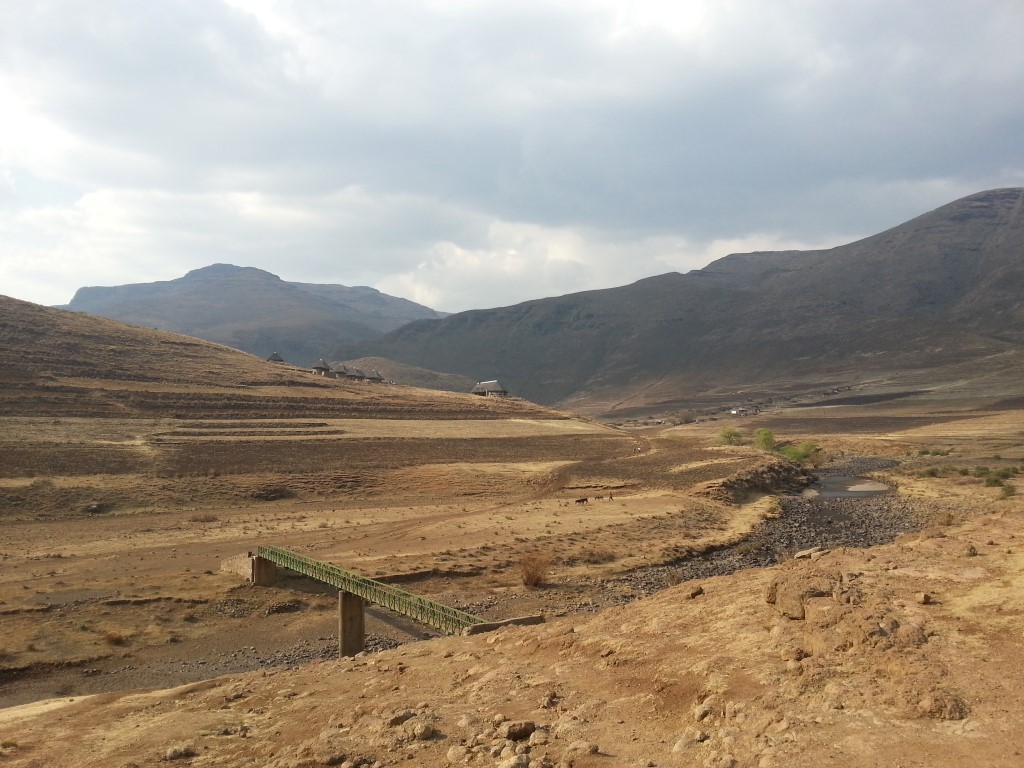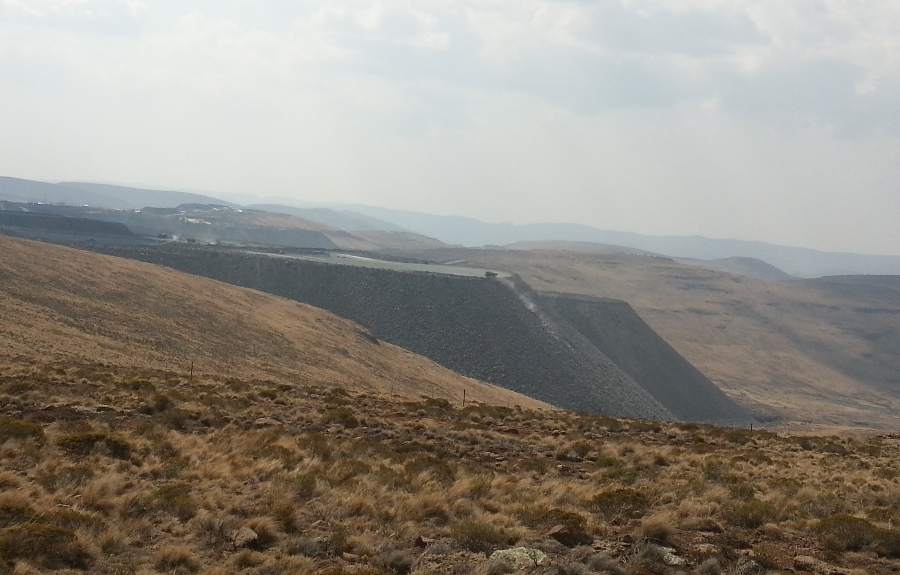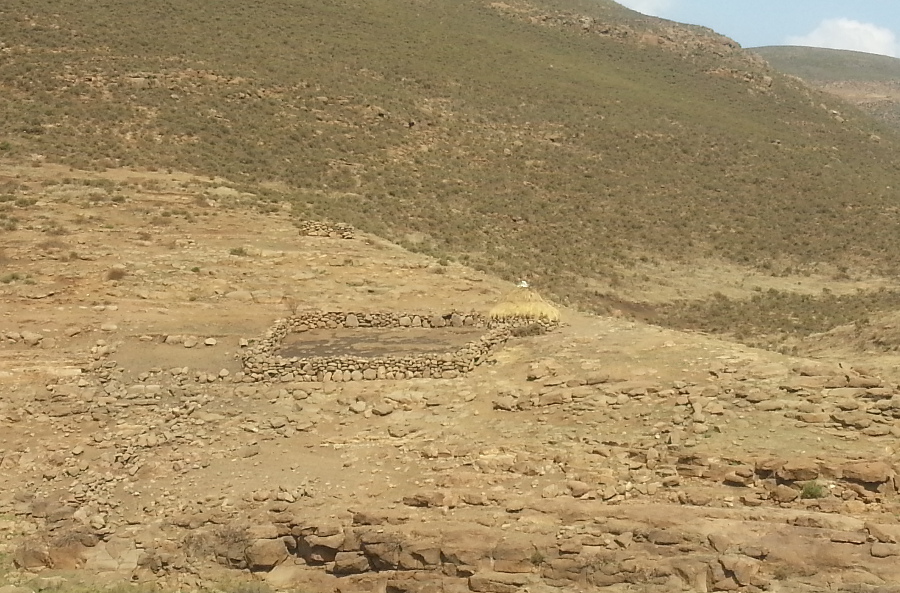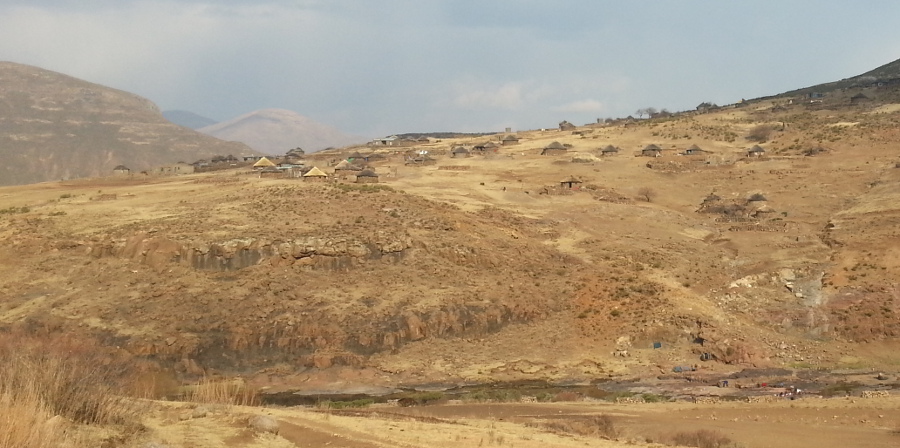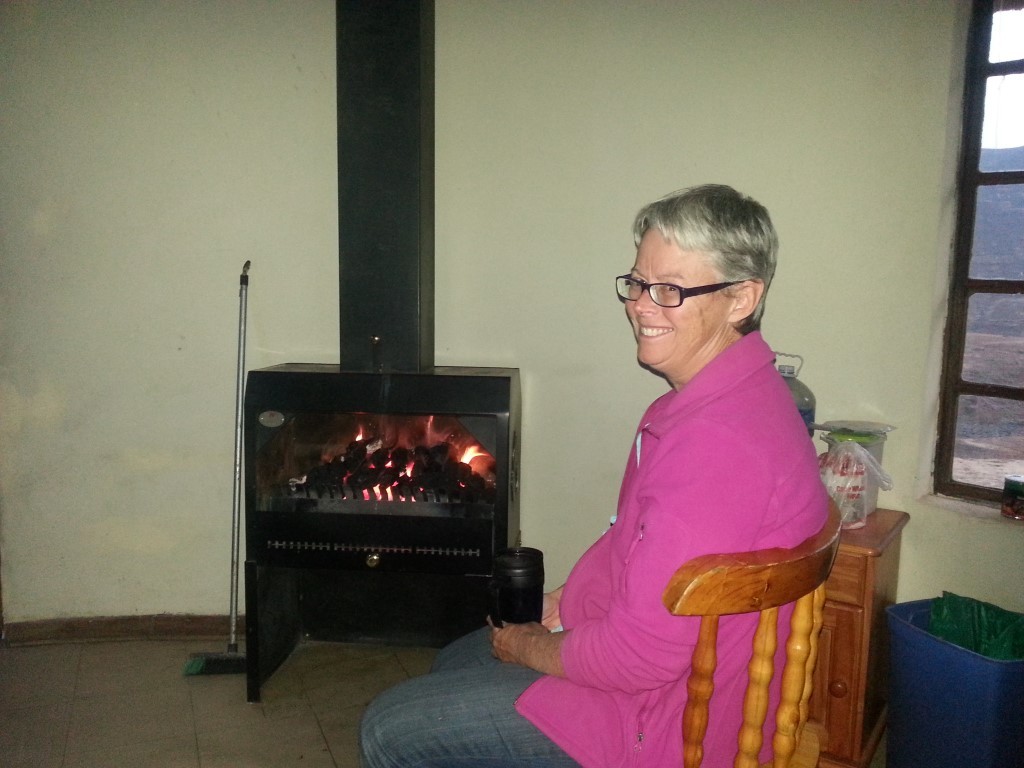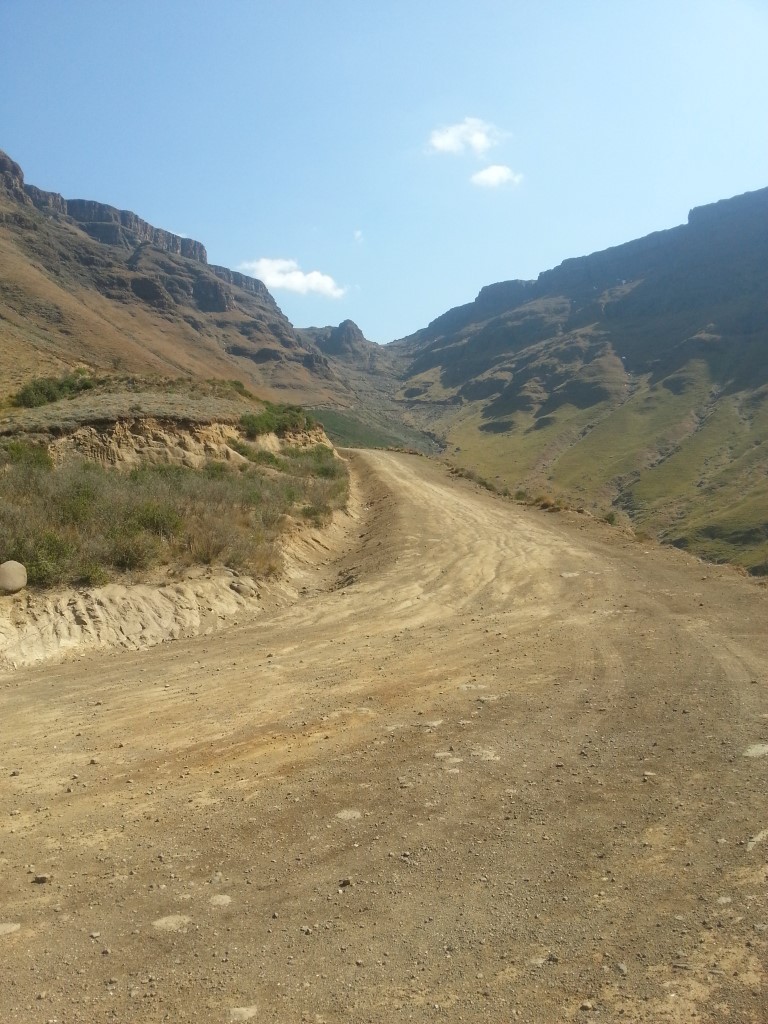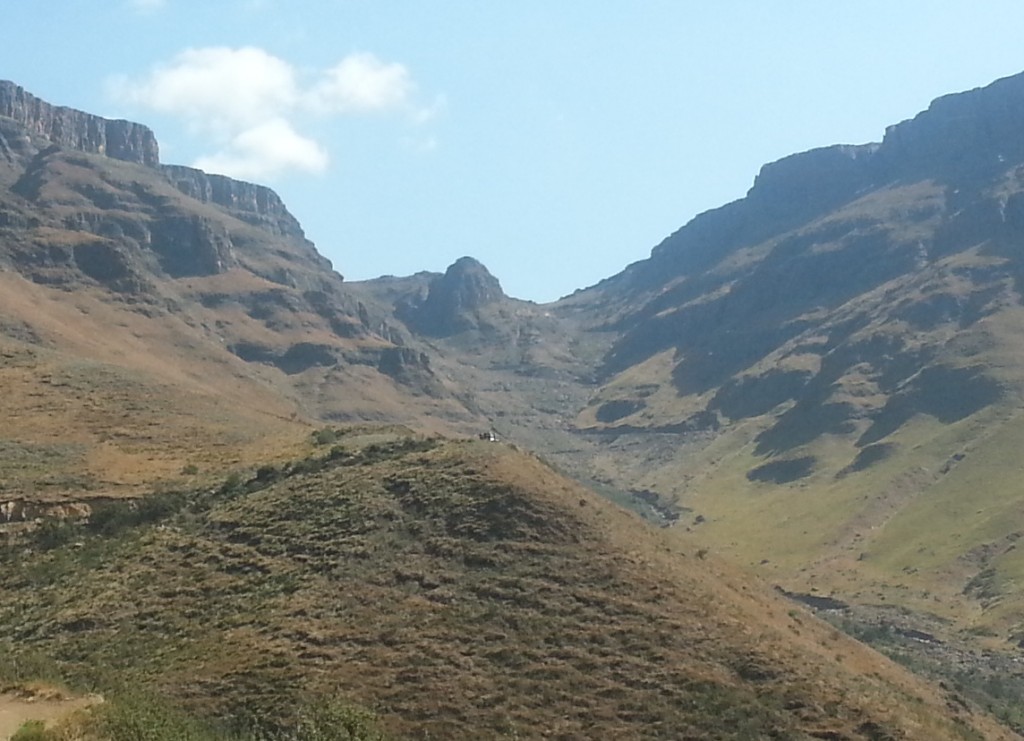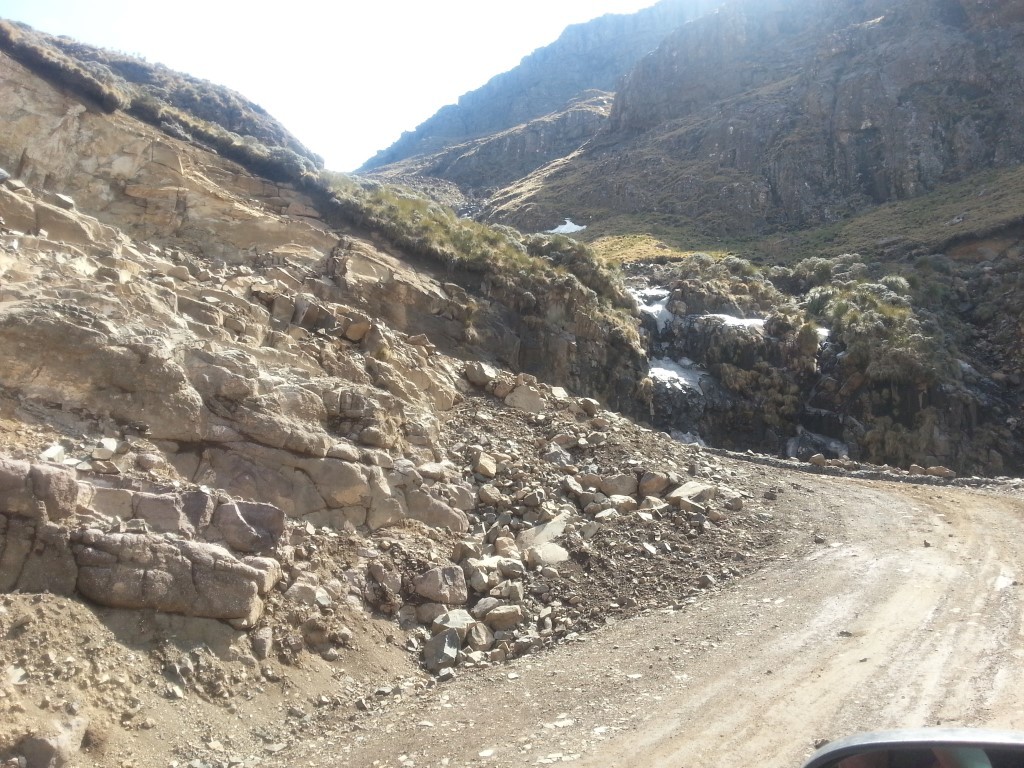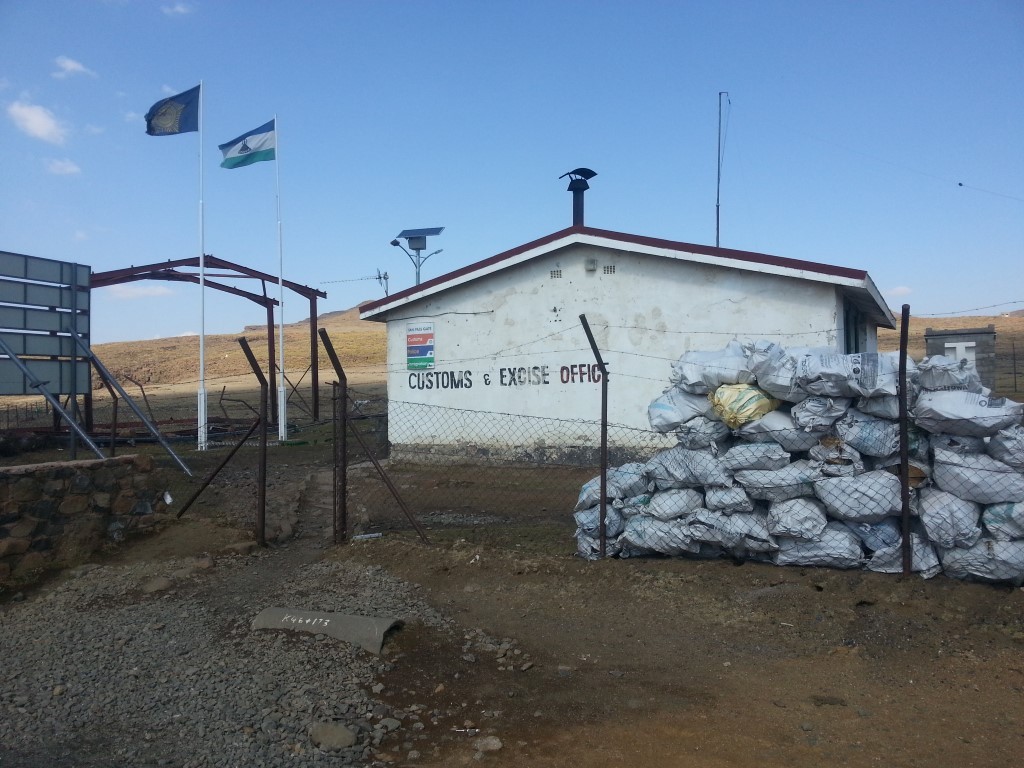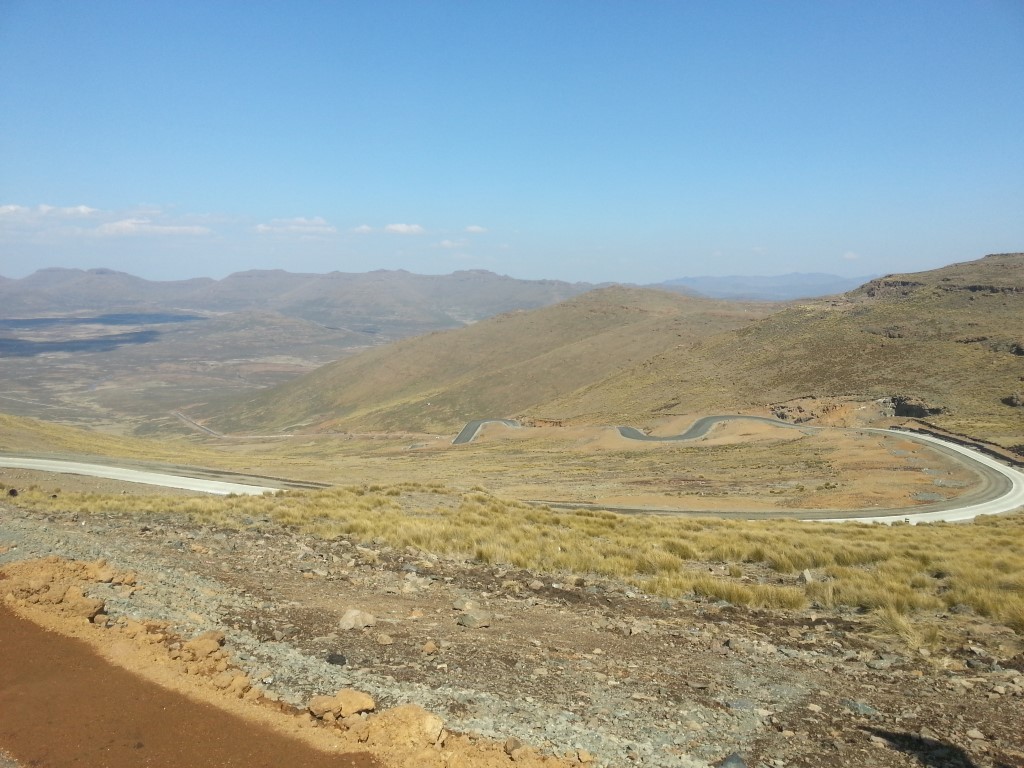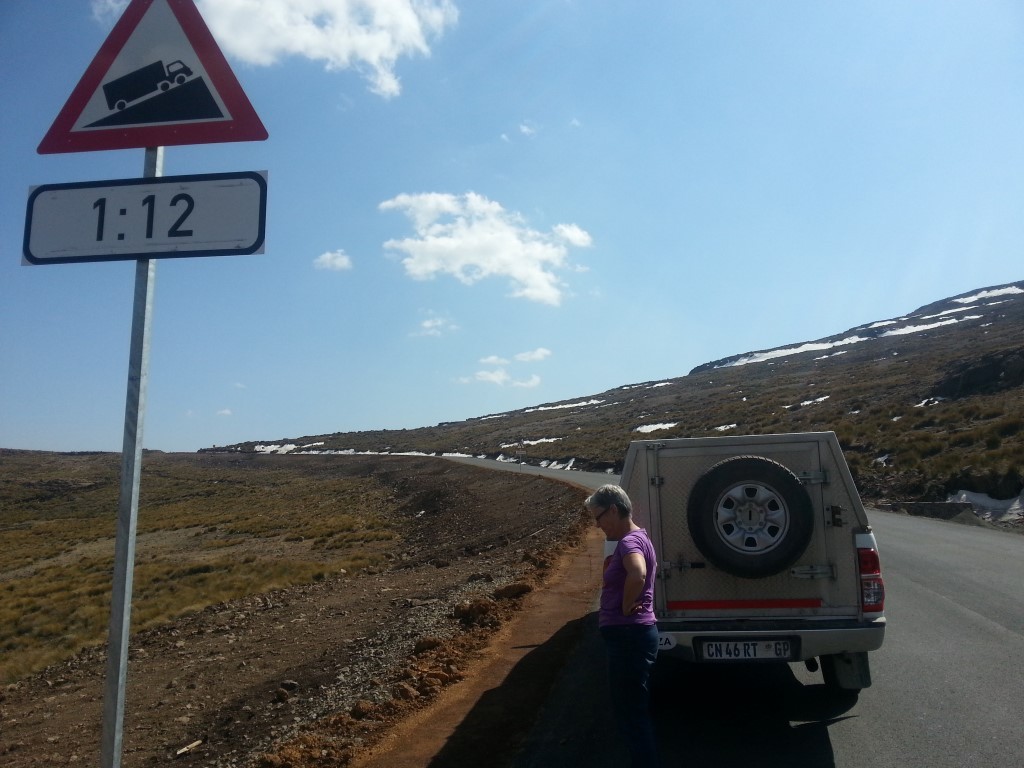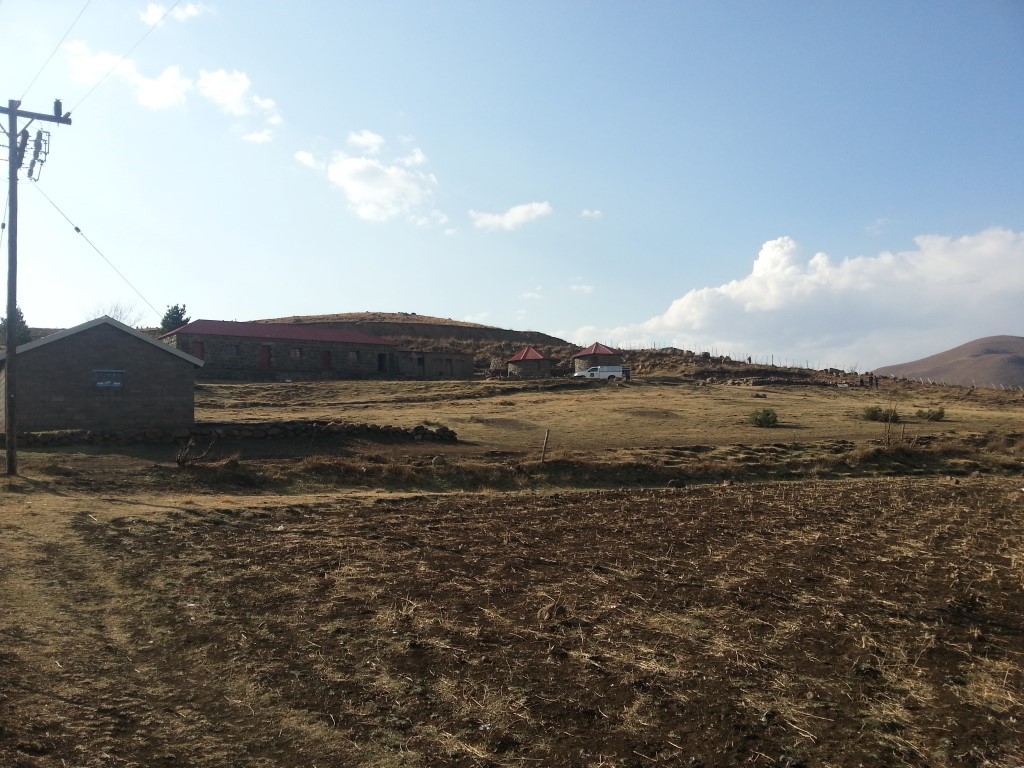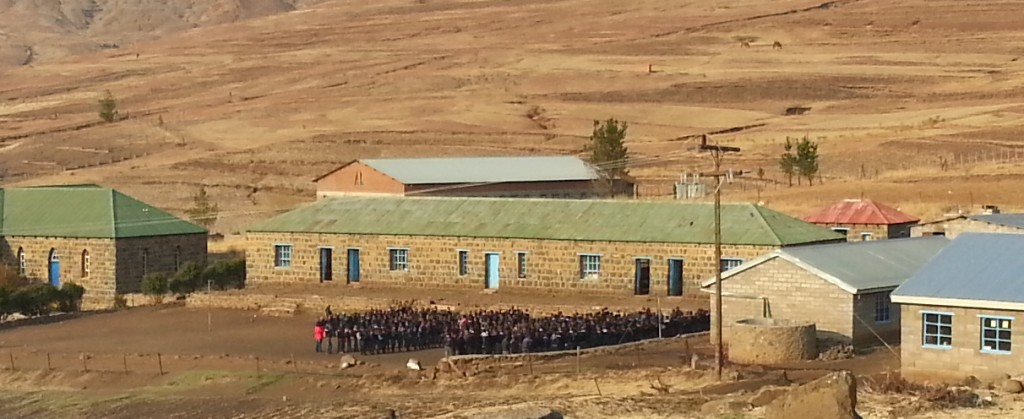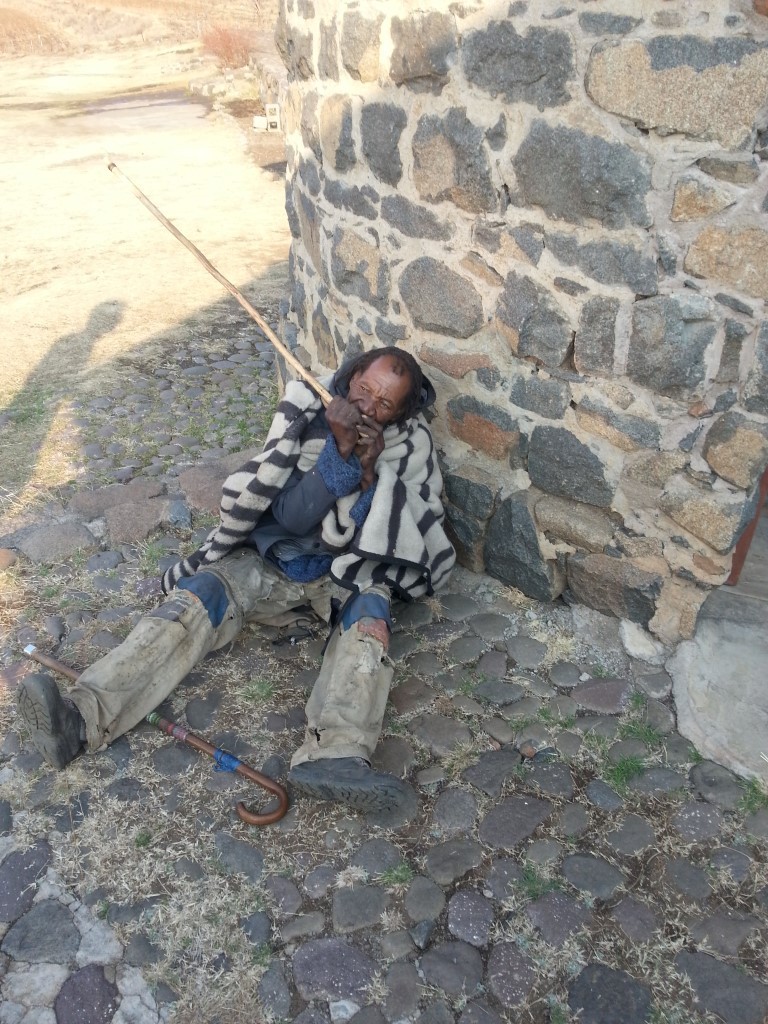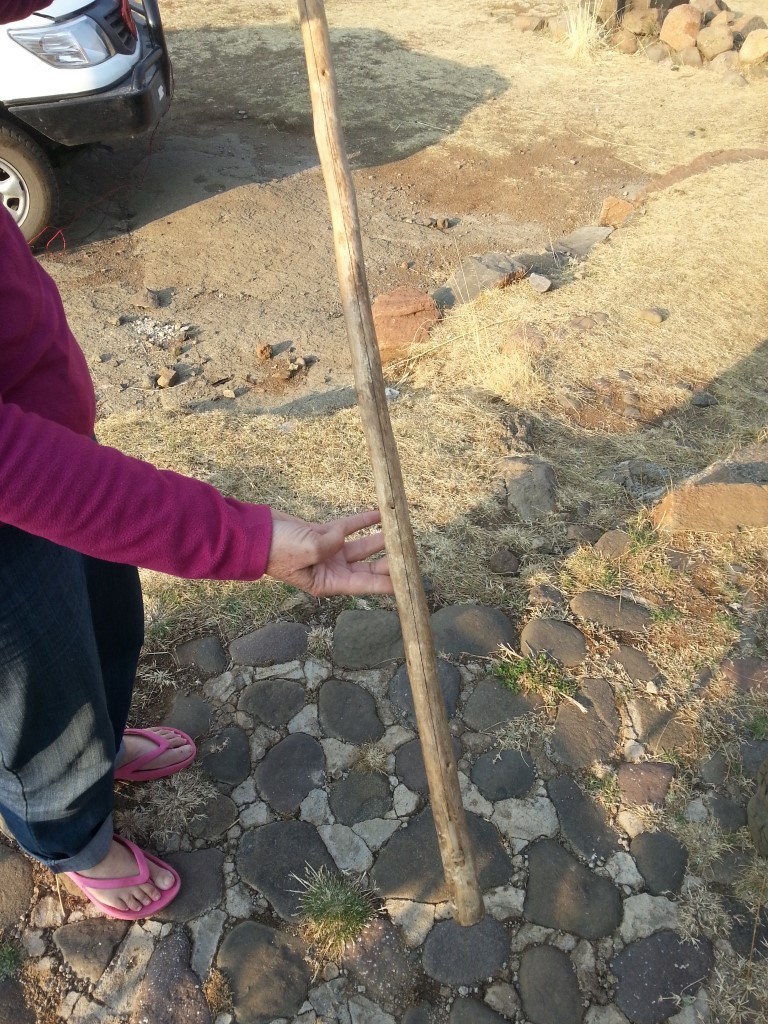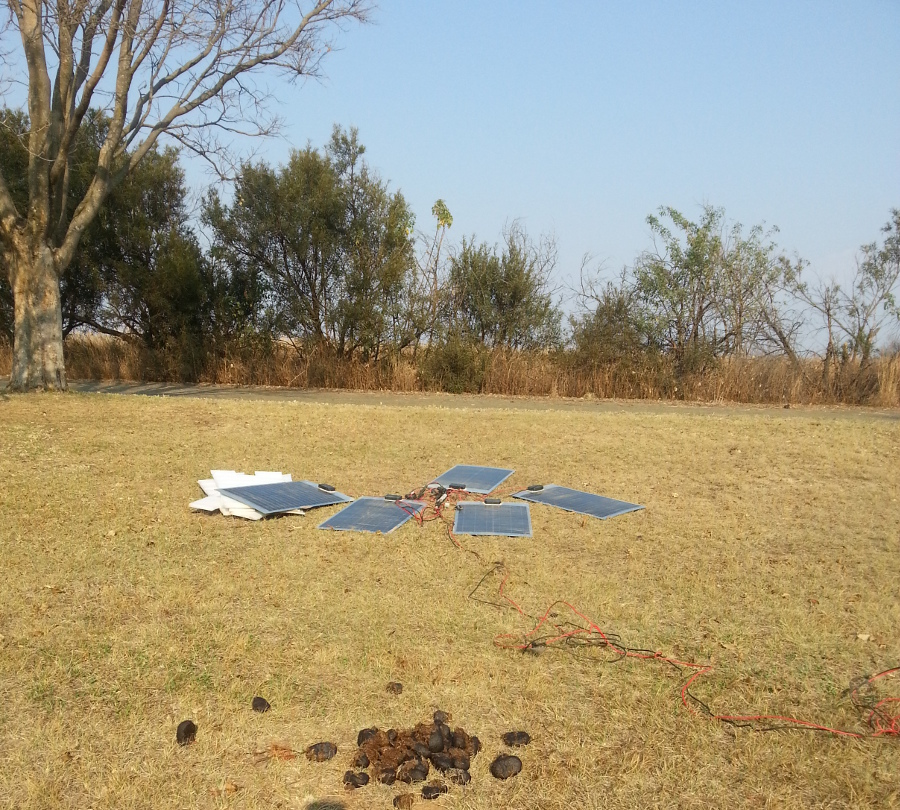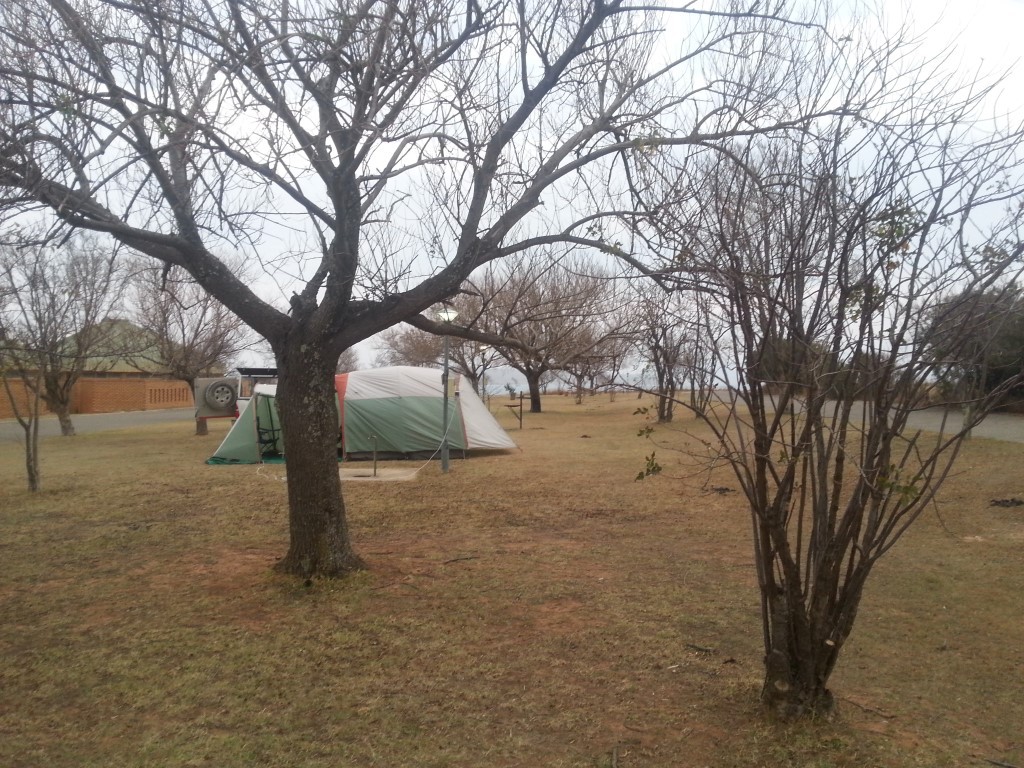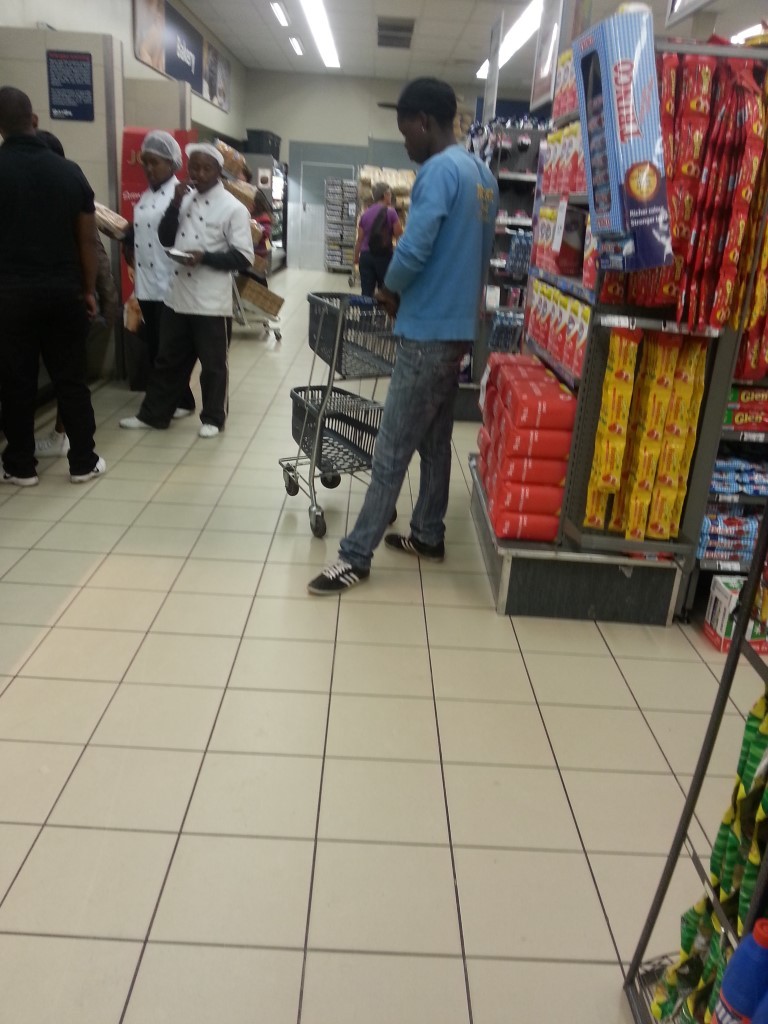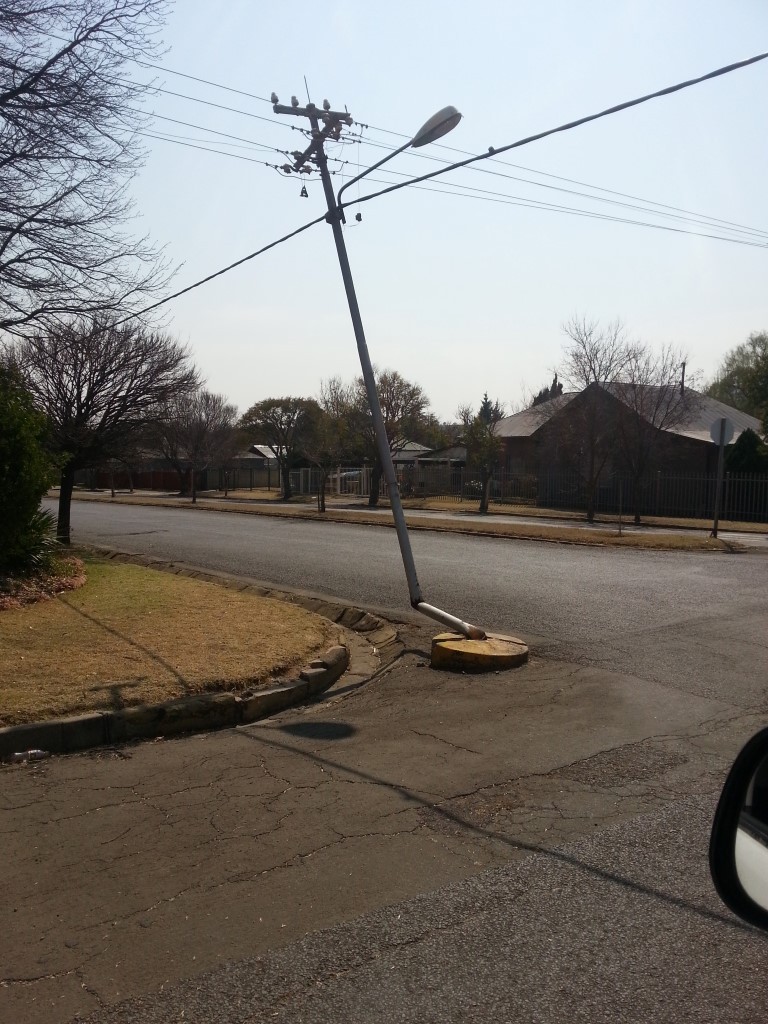We really did try hard to camp in Lesotho, but in our hunt for a flat, level spot to pitch the tent on, we realised that there’s probably almost no such thing in the whole country. It’s all above 1000 metres, and most of it is either mountainous, rocky and usually both. We have a 4WD guide book that has a self-guided driving tour through Lesotho, which recommends campsites and alternatives, but we were unexcited by their camping suggestions, so we headed straight to Maseru. Lesotho’s capital has a population of just under 250,000 .. so large enough to be a decent-sized city, but it still has constant reminders that we’re in Africa – cows and goats roaming around suburban streets, crazy traffic and even crazier pedestrians, invisible road markings because they haven’t been painted in at least 20 years.
We booked a room at a ‘Guest House’ on booking.com, but it all got a bit confusing. We turned up at the Trinity Guest House, conveniently located close to the SA/LS border, only to discover that there are 2 guest houses of the same name, and the one we had booked was 12 kms away. Then when we got there, the receptionist claimed to have no knowledge of our booking. Luckily there was a vacancy, driving in the dark here is … challenging.
Crossing back in to South Africa the next morning was the usual chaos. We’ve done quite a few African border crossings now, and the only thing they all have in common is that they are all different. Some need slips of paper stamped by several different departments, a couple demand health checks, some want all the paperwork for the car, and some just scan our passports and send us on our way.
We spent a night at the Onze Rust campground at Colesberg. We stayed there on our way to Cape Town last time.
We’ve just spent a couple of days camping in the Mountain Zebra National Park, about 1000kms north east of Cape Town. Went for a drive yesterday and saw lots of mountain zebras (they only have black stripes, no grey ones like plains zebras) and heaps of different species of antelopes. This morning it’s very misty and we wouldn’t see much, so we picked the right days to stay. Heading back to Cape Town today and have booked an Airbnb place for our last couple of nights.
